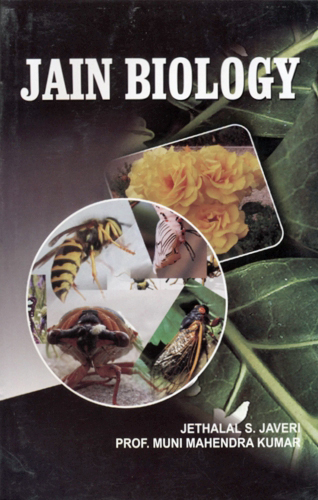Vegetable kingdom is dealt with in this scripture as follows: The basic classification is identical in both scriptures: subtle and gross; each of which is divided into under-developed and fully developed. However, Jain scriptures give utmost importance to the unique aspect of dividing the plants into two basic categories:[1]
- individual-bodied and
- common-bodied.
Each organism in the former type of plants called pratyeka śarīra, "one body-one soul" organism. But in the latter types of plants called "sādhāraṇa śarīra ", some parts have infinite souls sharing one common body, i.e. though each soul is numerically different and is possessed of its own individual kārmaṇa śarīra, it does not have an independent physical body of its own. Sharing a single common physical body, infinite souls are born together, breathe together and die together.
First the fully developed, gross, individual-bodied plants are described in detail. They are of 12 types. The detailed nature of classification though referred here, is described in more details in the
Jīvābhigama Sūtra:- Vṛkṣa (Tree)—Large perennial plant with self-supporting woody trunk (main stem), developing-woody branches at some distance from the ground.
- Guccha (shrub)—smaller tree without a trunk; many stalks come forth from a single root or bulb.
- Gulma—similar to the above, but bringing forth twigs or stems instead of stalks.
- Latā—creeper e.g. champakavela.
- Valli—climber e.g. gourd etc.
- Parvaga—plants with knots; e.g. sugar-cane.
- Tṛṇa—grass; plants, blades or leaves and stalks of which are eaten by cattle etc.
- Valaya—plants foliation of which are rounded; e.g. palms.
- Harita—small leafy plants with abundant green leaves e.g. bhajis etc.
- Auṣadhi—herbs and careals; plants which die after bringing forth seed.
- Jalaruha aquatic plants—lotus etc.
- Kuhaṇa plants which cause the earth to burst; (e.g. mushrooms etc.)
The above classification is identical to mat given in Uttarādhyayana. What follows now is, however, fcund in this scripture only.
In the Modern Botany, the plants are basically of two types:
- Crytoganic—Plants which do not have such obvious organs of reproduction as flowers or seeds; applied to algae, bryophytes and pteridophytes as opposed to pteridophytes as opposed to phaneroganic—plants—angiospcnns and gyanosperms.
The main mass of land plants are divided into four divisions: brypphtei pteridophytes, gyanosperms and angiosperms. Algae are classified jeperatelj because their bodies are not organized on the same general system, - Bryophytes—division of plants comprising 'MUSCINEAE' (mosses small plants growing in bogs, or in crowded masses on ground, wood, stone, etc.), HEPATICAE (LIVERWORTS—primitive seedless plant allied to mosses), and ANTHOCEROTAE (small green plants with thin flat body), THALLUS, usually found on deep soil.
 Jethalal S. Zaveri
Jethalal S. Zaveri
 Prof. Muni Mahendra Kumar
Prof. Muni Mahendra Kumar

